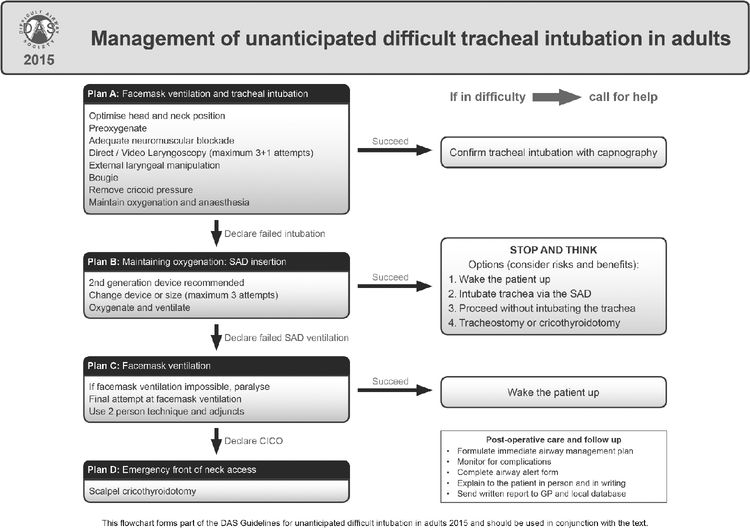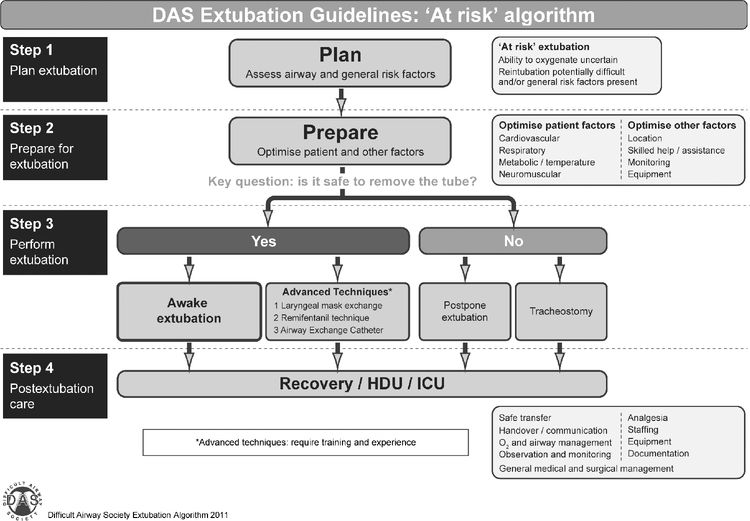Basic Structure of DAS Guidelines flow chart.

DAS Management of unanticipated difficult intubation in adult patient.


DAS Failed intubation, failed oxygenation in the paralysed, anaesthetised patient.
The DAS extubation guidelines
Extubation is a high-risk phase of anaesthesia and complications are common and may result in significant morbidity and mortality. Despite this it has not received the same level of attention as intubation. Several international airway guidelines recognized the need for a management strategy for extubation without any detailed discussion, except specifically for the management of the difficult airway. Following up on this in 2012, the DAS developed guidelines for the management of extubation in perioperative practice. The guidelines discuss the problems arising during extubation and recovery and promote a strategic, stepwise approach to extubation. They emphasize the importance of planning and preparation, and include practical techniques for use in clinical practice and recommendations for post-extubation care[2]. Figures 33.4 and 33.5 show the low-risk and high-risk algorithms, respectively. The basic algorithm is also available on the DAS website.

DAS Extubation Guidelines: Low risk algorithm.

DAS Extubation Guidelines: High risk algorithm.
The APA and DAS paediatric guidelines
The DAS paediatric difficult intubation guidelines relate to management of the unanticipated difficult airway in children 1 to 8 years old. The following three guidelines are available on the DAS website:
1. Difficult mask ventilation during routine induction of anaesthesia in a child aged 1 to 8 years
2. Unanticipated difficult tracheal intubation during routine induction of anaesthesia in a child aged 1 to 8 years
3. Cannot intubate and cannot ventilate (CICV) in a paralysed anaesthetised child aged 1 to 8 years.
It was identified that most paediatric airway management strategies were developed from adult practice. Therefore, following extensive literature review, external review and a consultation period the APA and DAS have developed these guidelines jointly (Figures 33.6 to 33.8). It is noted there is very little grade 1 evidence to support practice in paediatric airway management.

APA and DAS Difficult mask ventilation guideline.
Stay updated, free articles. Join our Telegram channel

Full access? Get Clinical Tree





